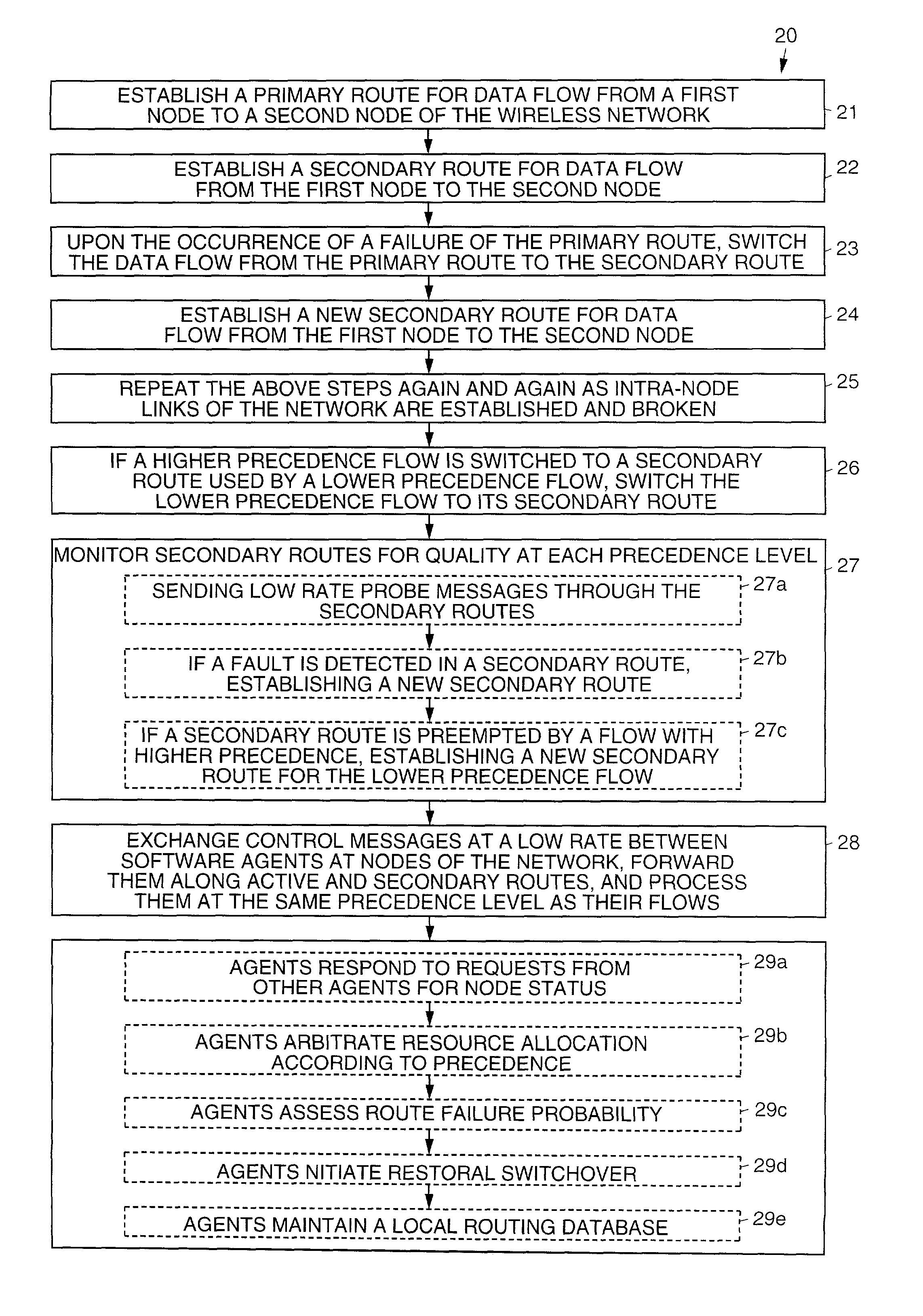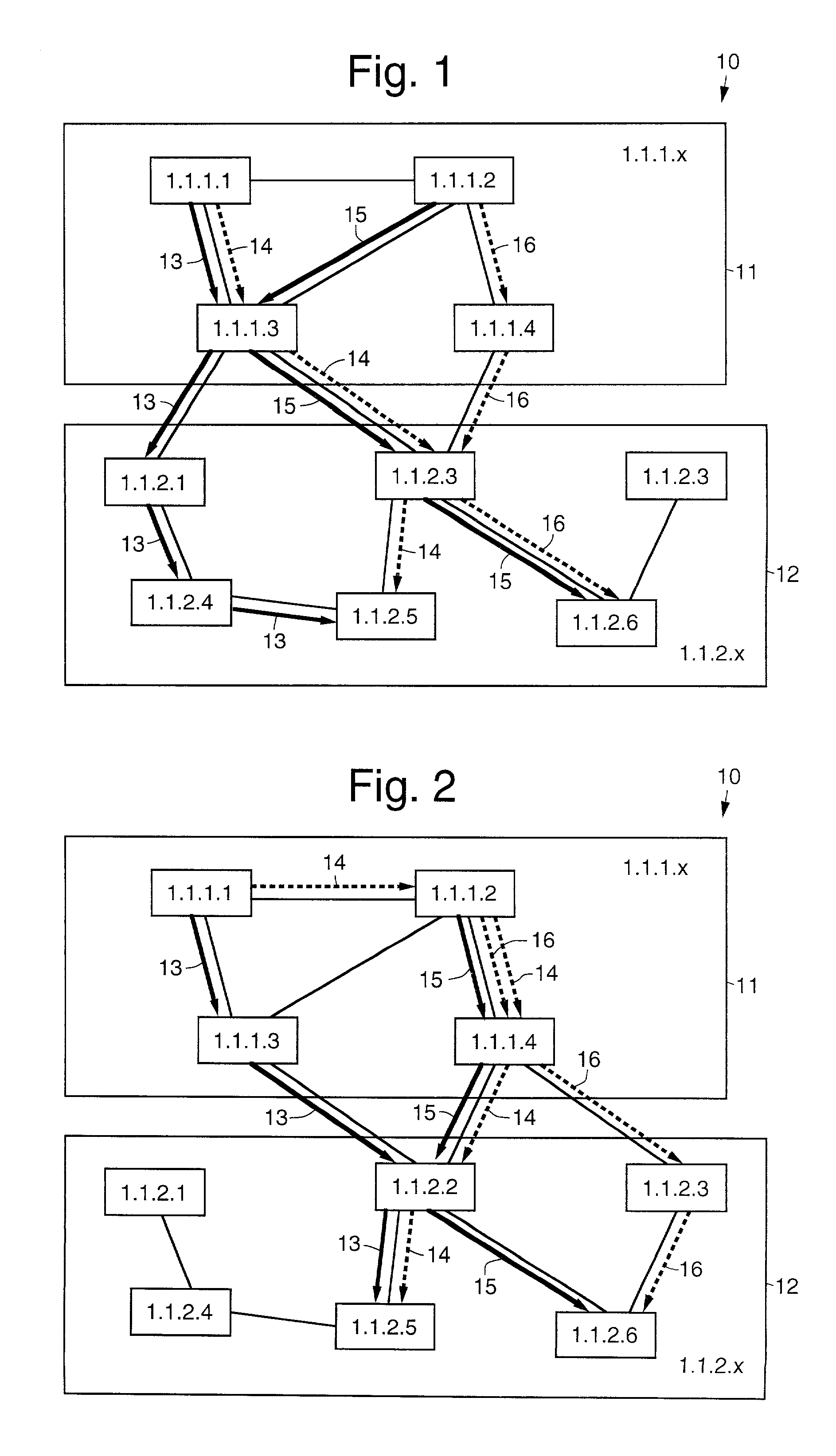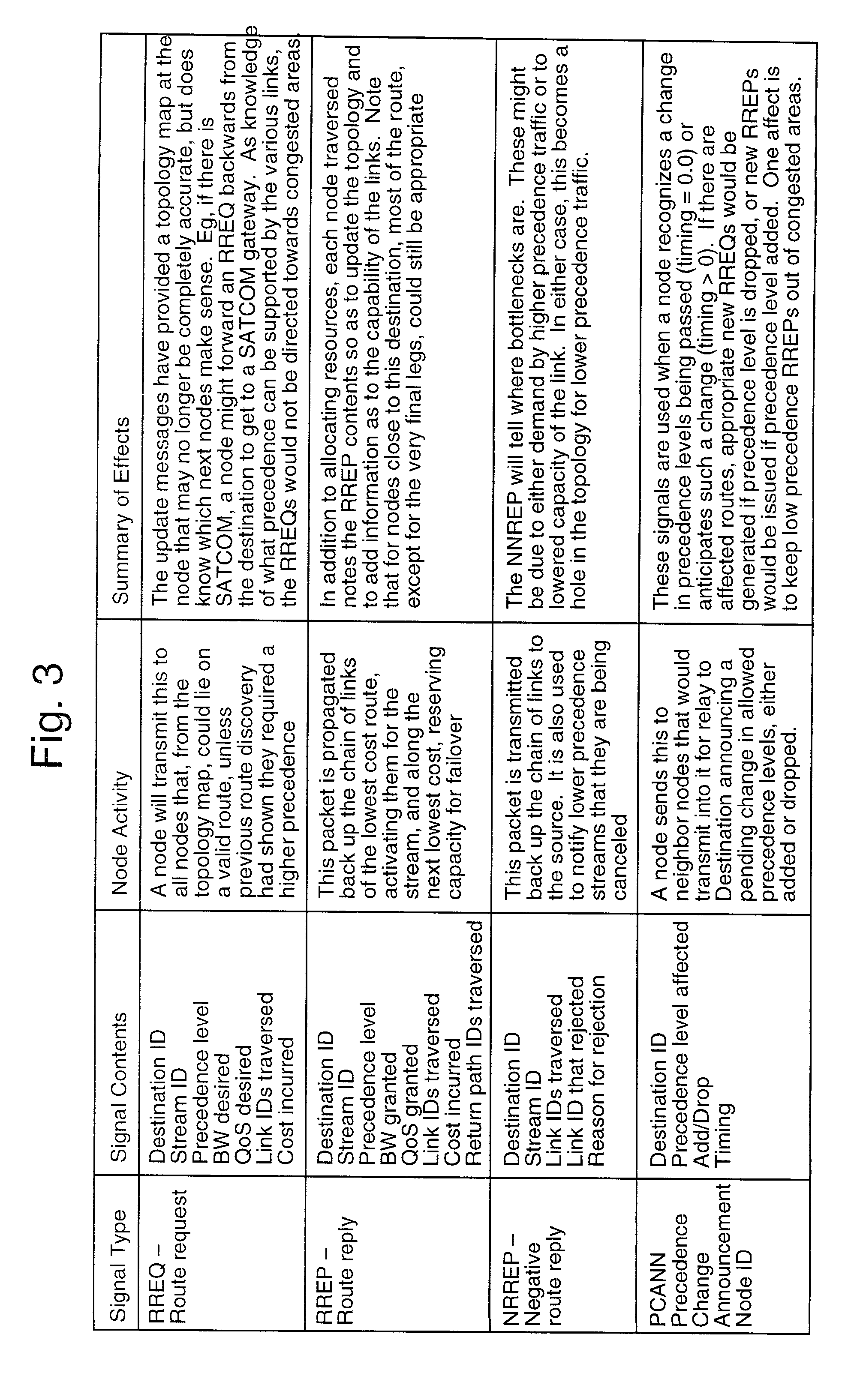Precedence-based routing/re-routing
a routing/rerouting and precedence technology, applied in the field of network, can solve the problems of very little time for discovery, ensuring very predictable, uninterrupted, etc., and achieve the effect of reducing or eliminating the delay in flow restoration and avoiding additional broken or congested links
- Summary
- Abstract
- Description
- Claims
- Application Information
AI Technical Summary
Benefits of technology
Problems solved by technology
Method used
Image
Examples
Embodiment Construction
[0017]The present invention provides for methods 20 or algorithms 20 that improve quality of service (QoS) for a wireless or dynamic network. The methods 20 or algorithms 20 proactively discover a secondary route for every real-time user flow through the wireless or dynamic network. The present invention is referred to as precedence-based routing / rerouting.
[0018]Referring now to the drawing figures, FIG. 1 illustrates an exemplary dynamic network 10 in accordance with the principles of the present invention showing two clusters of nodes 11, 12 at an initial time. FIG. 2 illustrates the exemplary dynamic network 10 with the two clusters of nodes 11, 12 at a later time.
[0019]FIGS. 1 and 2 depict two clusters 11, 12 of nodes (also designated as 1.1.1.x and 1.1.2.x) that are moving relative to one another, the links between these clusters 11, 12 of nodes (which may be created or broken by the movement) and two representative traffic streams that are to be carried over this network 10 fr...
PUM
 Login to View More
Login to View More Abstract
Description
Claims
Application Information
 Login to View More
Login to View More - R&D
- Intellectual Property
- Life Sciences
- Materials
- Tech Scout
- Unparalleled Data Quality
- Higher Quality Content
- 60% Fewer Hallucinations
Browse by: Latest US Patents, China's latest patents, Technical Efficacy Thesaurus, Application Domain, Technology Topic, Popular Technical Reports.
© 2025 PatSnap. All rights reserved.Legal|Privacy policy|Modern Slavery Act Transparency Statement|Sitemap|About US| Contact US: help@patsnap.com



